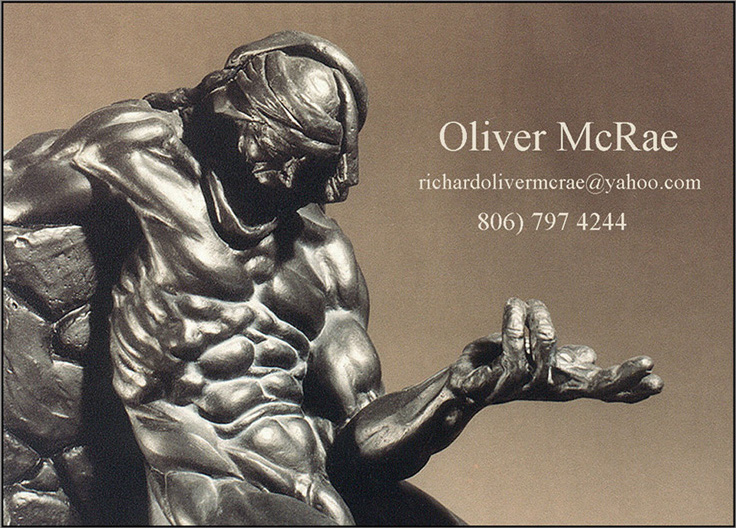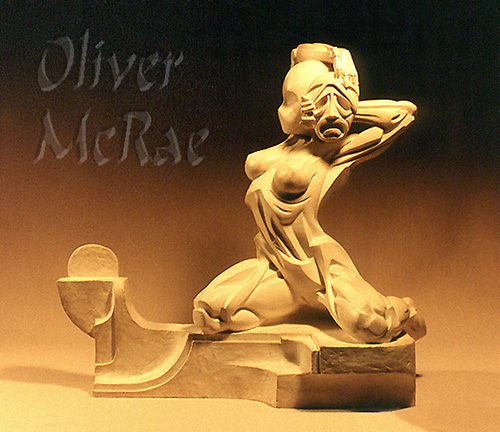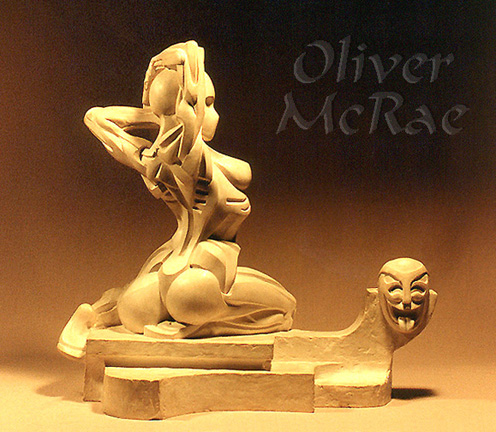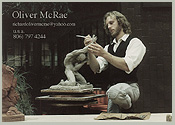

|
|
The Watcher pays tribute to the faceless figures of the prehistoric Cyclades, whose senses turned to inner vistas: seeing visions and dreaming dreams. He addresses the external world with the universal gesture of affirmation - the open hand, while perching like stork and Australian aborigine on one leg - poised forever in the zen tranquility of the immediate and eternal, ongoing, here now.
|
|
Star Seeker In the flushed vigor and unrestrained ambitions of springtime, the tender visionary stretches high, reaching for his dream. But the world, far older and wiser, restrains his adolescent aspirations, pulling him back to the more stable security of the status quo, to the familiar and familial comfort of bell curve mediocrity.

|
|

Hotspur Night and day, liberal and conservative, male and female, black and white, good and bad, geometric and organic, classic and romantic, positive and negative, left brain and right brain, power and frailty; the phenomenon of dualism is deeply woven into the fabric of all human existance. Shakespeare's mighty warrior Hotspur, feared in battle, venerated on fields of valor by friend and foe alike, is yet a docile and acquescing kitten at his wife's hearth. This dual character is contemplated as Hotspur regards the butterfly.
|
|
Salutation to the Rising SON Eternal and infinite OMNIPOTENCE stepped down from majesty on high, and folded into a frail tent of human flesh; for a brief span the CREATOR walked as one created. There was a moment in that matriculation from babe to boy to man when consciousness opened like a flower blossoming, and The Son of Man became THE SON OF GOD.
The Creator the inventor, the idea man and maker of new things, the innovator who languages forth entire other paradigms, it is these lone and undistinguished individuals laboring in fringe studios, basement laboratories, and back alley shops who elevate the squatting simian tribe out of the darkened woods of barbarism, hefting the collective species up into the clear and lucid heights of Civilization.
Struggle Driven by an irrepressible passion for figurative art, McRae yet came of age in the time of rabid Modernism, when all realist and literary tendencies were viciously demeaned and damned by the abstract expressionist paradigm. While tenaciously adhering to his figural predilection, McRae also developed a heartfelt regard for the formalist compositions of abstract sculpture, in time visiting Sir Henry Moore at his Much Hadham estate. This sculpture reflects a young artist's attempt to reconcile two monolithic and seeming antithetic worldviews. Moore's sage response to McRae's troubled portfolio was paternal and gracious: "You're doing just fine. Keep up the good work!"
The Temple of GOD In hyperdimensional ardor, the devotee of the triune GOD extends his hands in praise, worship and adoration of the eternal and ineffable YOD, VAV, and HEY.
|
|
Anagog Across all cultures, tribes and tongues, the way to eternal paradise is charted by works of beneficence - charitable actions, good deeds, sacrifice and selfless service to others, the beau geste, the noblese oblige. For a select few however there is another path - not lateral but vertical, not ministerial but monastic, not outward to an oppressed world but inward and upward in silent ardor and secret adoration. One way fulfills the communal Great Commission, the other pursues the private and personal Great Commandment.
Star Watcher A small star from the east secure under her thigh, a Priestess sits atop her temple, warming her toes in the sun's rising glow. Patiently anticipating portentous alignments, she scans the waning night for the heralded advent of the bright and shining Star of the Morning.
Liver Eatin' Johnson For John Seguine McRae who always supported his son's art but sagely counseled, "If you want to make it as a sculptor, you have to do western bronzes".
|
|
